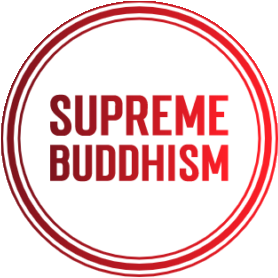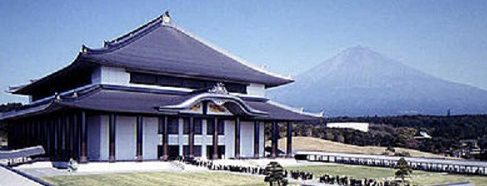Contents
ATTAINING BUDDHAHOOD IN THIS LIFETIME
For those who have recently joined Nichiren Shoshu and are taking their first steps in faith, it is most important to have a clear understanding of the purpose of faith.
The following analogy may serve to illustrate. Suppose there are two people reading the same book. One person strives to learn all the words and grammar in the book, while the other makes efforts to grasp the author’s intent. Clearly, what the two will gain from reading will be quite different. Even in reading a single page of a book, there is a tremendous difference in the result gained by each type of reader. Inevitably, the first won’t gain the significance, while the other’s effort can open up a whole new world.
Our approach in faith is even more important. The more we can awaken to the purpose of faith, the clearer the approach necessary to achieve that purpose will become, as will the correct attitude in faith.
The most important point to keep in mind is that the practice of True Buddhism is a lifelong journey. Nichiren Daishonin teaches us that to begin is easy but to continue is difficult; however, attaining enlightenment lies in continuing faith.
So what is the purpose of faith in Nichiren Shoshu? To put it simply, there are two ultimate purposes for taking faith in this Buddhism. One is to realize an absolutely unshakable state of happiness in which there is boundless joy in being alive (attaining Buddhahood in this lifetime). The other is to realize an ideal society in 4The Purpose of Faith 5 which people can enjoy happy lives together based on True Buddhism (Kosen-rufu).
“Attaining Buddhahood in this lifetime” does not mean changing your human form. Nor does it mean becoming a Buddha when you die, a mistaken view commonly held in other Buddhist denominations. Rather, it means achieving, in this lifetime and in our present form, the greatest potential life condition contained within the depths of our lives through sincere faith in and practice to the Gohonzon.
This highest life condition is called “The Buddha,” “Buddhahood,” or “the Buddha nature.” Another name for it is “Myoho-Renge-Kyo.”
Buddhahood is a mighty force that manifests a solution to every kind of suffering. It is a source of energy which manifests in our daily lives and propels each of us into a brilliant, truly joyful and fulfilled existence in the present moment. Striving in faith, we aim to establish an absolutely indestructible life condition of spiritual strength, wisdom and peace grounded in the world of Buddhahood.
Of course, situations in which an ill person becomes healthy, an unhappy family finds harmony, or poverty changes to financial security are necessary conditions for a happy life. However, if these conditions are examined closely, they can all be seen to be relative, partial forms of happiness in comparison to an inner condition based on Buddhahood. In many cases, relative happiness is manifested only temporarily or partially.
However, within the reality of our daily lives, we are often embroiled in so many kinds of hardships that we cannot keep track of them all. Though we are able to make money, we may suffer with family discord, or even if we are healthy we may have unhappy children.
Uncovering and revealing the world of Buddhahood is the fundamental source for attacking the root cause of suffering in human life, and for resolving every possible form of distress. This is the absolute happiness each and every person in the world is longing for in the depths of his or her heart.
Just as a single drop of water is included within a great ocean, a person who has established an absolutely happy life condition through embracing True Buddhism will definitely be able to resolve6 Nichiren Shoshu Basics of Practice flaws in his or her character, and overcome sickness, poverty, or family problems.
Thus, it is important for us to have unshakable faith and tenaciously seek the attainment of Buddhahood in this lifetime, without being swayed by external circumstances. With strong faith, we need not be joyful one moment and depressed the next because of the ups and downs of life. Even small prayers will be answered without fail.
ACHIEVING KOSEN-RUFU
The second important purpose of faith is Kosen-rufu, which means to ceaselessly and correctly protect Nichiren Daishonin’s Buddhism and widely propagate it throughout the entire world in order to rid the world of misery. This will create unshakable happiness for all people and build a truly peaceful society.
From the very start, Buddhism has taught its followers to be merciful and to pursue their own happiness together with concern and compassion for others.
Nichiren Daishonin risked His life for peace in society and the happiness of humanity, and offered Himself wholly for the sake of Kosen-rufu. His successors, the Second High Priest Nikko Shonin, the Third High Priest Nichimoku Shonin, and each of the successive High Priests, have all fervently exerted themselves for the realization of Kosen-rufu.
Those who make this admirable spirit a deep part of themselves and thereby dedicate themselves for the sake of Kosen-rufu are embracing the true spirit of Nichiren Shoshu believers.
Thus, the purpose of faith in Nichiren Shoshu is to gain true happiness by attaining Buddhahood in this lifetime and to widely teach and propagate Nichiren Daishonin’s Buddhism throughout the whole world in order to lead others to happiness.
FAITH, PRACTICE, AND STUDY
In order to gain the great benefits of True Buddhism, faith must always be accompanied by practice. Usually, when a person wants to express thanks to another it is a common social practice to makeThe Purpose of Faith 7 some gesture (saying, “Thank you,” giving a gift, etc.) to express that sentiment. If a person feels grateful but makes no expression of gratitude, that gratitude is not conveyed to the other person. It could be argued that the person feels no true appreciation. Faith is like this. If a person believes in Nichiren Shoshu Buddhism, this resolution in faith should reveal itself physically, in the form of action.
Practice inevitably accompanies faith. This means that the will to believe in and have respect for the Gohonzon is expressed as practice. Practice is chanting Nam-Myoho-Renge-Kyo (Daimoku), and reciting a portion of the Lotus Sutra (Gongyo). The deep desire to seek the truth of Buddhism is expressed as the study of doctrine. Nichiren Daishonin states:
Exert yourself in the two ways of practice and study. Without practice and study, there can be no Buddhism . . . . Both practice and study arise from faith.
(MW, Vol. 1, p. 95, Gosho, p. 668)
The Daishonin teaches that we must work diligently in our Buddhist practice and our study of doctrine. Our practice is something that emerges from the determination of our faith. Our faith and practice are kept on track by study. Nothing valuable results in our daily lives unless we act. The truth is that if we don’t translate something into practice, we won’t reap the rewards from it, and our understanding won’t progress. Not only that, when putting something into practice, it is often the case that when we don’t do it according to the correct method, our efforts are wasted, and we gain nothing.
As believers of Nichiren Shoshu, it is important for us to correctly practice Buddhism together under the leadership of a correct teacher and with encouragement8 Nichiren Shoshu Basics of Practice from experienced believers. It is important that we walk the path of Buddhist practice together. As we gain actual proof of the great fortune of the Gohonzon and an understanding of the doctrine, our faith will deepen without fail.
PROTECTION FROM WITHIN AND WITHOUT
Without the tremendous benefit of True Buddhism, it would be impossible to achieve Buddhahood in this lifetime or to achieve Kosen-rufu. Therefore, we steadfastly protect the True Law. This also results in great benefit for ourselves, since resolutely protecting True Buddhism means that in actuality we are protecting the Buddhahood within our own lives.
“Protecting True Buddhism”—that is, protecting the True Law— has two aspects: protecting the True Law from within and protecting the True Law from without. “Protecting from within” means that the True Law is being protected from within the priesthood. The High Priest possesses the True Teachings which are handed down from one High Priest to the next. Under the direct leadership of the High Priest, the priests study and teach the profound doctrines of the True Law. “Protecting from without” means to protect the True Law externally. This is the role of lay believers. In all aspects of our daily lives we maintain faith in the True Law and spread the influence of the True Law far and wide through our shakubuku (propagation) efforts. At the same time, we work for the prosperity of the True Law by making sincere offerings to the Gohonzon and by influencing society in various ways.
The protection of the True Law into the distant future begins with this protection from within and without. Shakyamuni defined the relationship between these two in the Nirvana Sutra, by stating:
Within, there are disciples who understand the immeasurably deep doctrine. Without, there are pure minded lay believers. Thus is Buddhism perpetuated into eternity. (Gosho, p.790)
The Purpose of Faith 9 This means that the True Law and correct doctrine would be lost if there were no priests. It is also true that if there were a priesthood but no lay believers, there would be no one to protect the temples and spread the True Teaching throughout society.
It is intrinsically impossible for Buddhism to take a form in which there are only lay believers or only priests. Thus the importance of the priesthood and laity being firmly united together to protect the True Law from within and without, each with its own mission and role, cannot be overemphasized.
Accordingly, the fundamental spirit of the believers of Nichiren Shoshu is to protect the direct flow of the Daishonin’s orthodox Buddhism under the direction of the priesthood.
There is great virtue in revering the High Priest, who possesses the Heritage of the Law, and in respecting the priests under the High Priest, who learn the profound heart of the True Law from him. Merit also accrues from protecting the Head Temple and the local Nichiren Shoshu temples in harmonious unity between the priesthood and the laity. We should embed this realization within our hearts and never lose sight of it. No matter how much the times have changed, this has been the basis for the conduct of Nichiren Shoshu lay believers for over 750 years.














